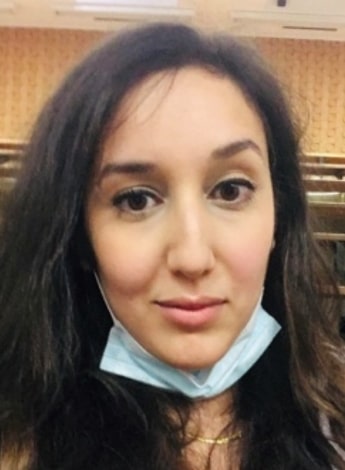
Predicting complications after pulmonary resection

French physiotherapist Fairuz Boujibar is the lead author on a new prospective inception cohort study that investigates whether quick and simple exercise tests can predict postoperative complications among patients undergoing resection of lung cancer.
The patients in your cohort study were undergoing minimally invasive surgery. Can you explain what that entails and whether postoperative complications still occur even though the surgery is minimally invasive?
Major lung resection is associated with an incidence of postoperative complications of 13 to 28 per cent and mortality varying between 3 and 6 per cent.
All the current preoperative recommendations in thoracic surgery are based on studies that do not take into account the new surgical techniques (video- or robotic-assisted thoracic surgery).
It is therefore necessary to produce scientific literature evaluating the interest of low-technology tests associated with modern surgical techniques.
We were interested in patients who underwent video-assisted thoracic surgery or robotic-assisted thoracic surgery, because they are less invasive techniques, generate fewer complications, limit the functional and painful impact of surgery and promote early recovery.
The complications are fewer in number but not absent.
Indeed, the risk of complications increases sixfold in those using tobacco.
Moreover, operated patients often present with numerous comorbidities, such as respiratory, vascular and/or cardiac disorders.
What were the preoperative exercise tests that you examined in the study to see if they were predictive of complications?
Patients performed a 6-Minute Stepper Test (6MST) and Sit to Stand Test (STST) during their preoperative consultation with a physiotherapist.
The 6MST was done using a stepper with a walking height of 20 centimetres, placed in front of a wall or parallel bars, so patients could hold on if they lost balance.
Patients were instructed to make the maximum number of steps possible in six minutes.
The STST was done using a chair measuring 47 centimetres in height.

Fairuz Boujibar's research looks at whether exercise tests can predict postoperative complications after resection of lung cancer.
The patient was instructed to sit in the chair and then to do the maximum number of lifts possible from the chair in one minute, with arms folded and without leaning against the chair.
If the patient was prehabilitated, these tests were repeated the day before surgery to take into account the last value before surgery.
How well did each test predict complications and what was the threshold score on the tests that distinguished people who were likely to develop a complication?
In the context of thoracic surgery, there are several risk factors for complications: male sex, age greater than 75 years old, low weight, smoking, chronic obstructive pulmonary disease, cardiovascular disease and exercise deconditioning.
In this work, we wanted to know if the 6MST and the STST predicted complications.
We found that both tests were predictive of complications and mortality.
The optimum cut-off was 140 steps and 20 lifts, respectively.
We therefore recommend performing a cardiopulmonary exercise test and prehabilitation for all patients below this cut-off.
Some other characteristics (eg, age, clinical severity score) are already used as predictors of complications. Did the exercise tests improve on their predictive ability?
Currently, FEV1 and VO2 max are the main characteristics used to predict complications.
We know that STST is a stronger predictor of two-year mortality (AUC 0.78) than FEV1 (AUC 0.61) for COPD patients.
Moreover, the 6MST may be a better predictor than FEV1, as suggested in our analysis.
In our study, the VO2 max shows a low correlation with the 6MST and with postoperative complications.
Would you recommend that clinical physiotherapists use one test in preference to the other?
The STST is easier and faster to perform in a standard care setting than the 6MST in practice and has a similar prognostic value.
In addition, the STST lasts one minute compared to six minutes for the stepper test, which makes it easier to perform several times.
>> Fairuz Boujibar has been a physiotherapist since 2014 and currently works at the Rouen University Hospital in the Department of Thoracic Surgery. Fairuz was awarded a PhD in 2020 and her research focuses on the modalities of preoperative assessment and prehabilitation in thoracic oncology.
© Copyright 2024 by Australian Physiotherapy Association. All rights reserved.





